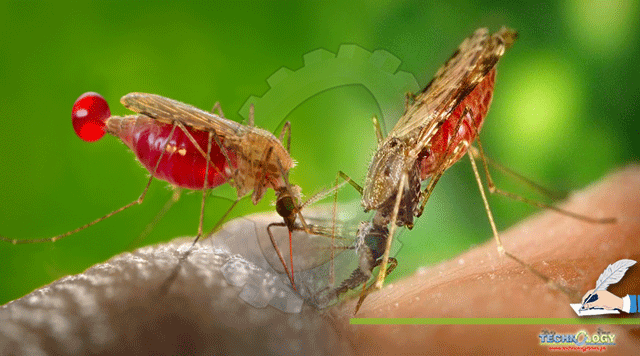Leishmaniasis a widespread tropical infection, occur due to many species of Leishmania parasites. It is spread by the phlebotomine bite (sand fly), present a global threat to public health with increase mortality and morbidity.

By Arzoo Ashraf
The parasite grows in size and proliferates in female sand fly as currently, it has wider range of topographical distribution in. Increase in infection rate, increases the risk factors for disease occurrence that include massive migration, urbanization, malnutrition, immunosuppressant, deforestation and treatment failures.
Epidemiology
Leishmaniasis is endemic in 88 countries; about 350 millions of individuals are associated with greatest risk, with such a global prevalence of 12 million people and approximately 1.5 million cases every year. Sand flies that transmit the pathogen are most commonly seen in tropical and subtropical regions. In Asia, East Africa, and South America, lethal outbreaks have emerged. Population movement as well as man made changes to environment cause alterations in density, so as a result ranges of vectors and reservoirs accordingly enhance individual exposure to infectious sand flies.
Transmission
Throughout the hotter seasons and at midnight, from nightfall to sunrise, the fly is more energetic in moist habitats. Domesticated animals, such as dogs, can contribute as pathogen carriers. Spread from wildlife to sand fly to humanity is possible. Individuals can potentially pass the virus on to one another via blood products or contaminated needles. Propagation of infection from people to sand fly to individuals has been observed in several areas worldwide. In their vertebrate hosts Leishmania live as intracellular parasites inside various cells, typically macrophages, residing within phagolysosomes as amastigote life-cycle stages.
Clinical Presentation
Its clinical symptoms are highly various and based on diversity of parasite and host constituent. There are 14 species of Leishmaniasis that commonly cause human leishmaniasis but they are usually divided into three categories:
- Cutaneous leishmaniasis (CL) cause painless skin sores
- Mucocutaneous leishmaniasis (MCL) cause skin ulcers (in mouth, lips and nose),stuffy nose and difficulty in breathing
- Visceral leishmaniasis (VL) affects mainly internal organs of the body like liver, spleen and bone marrow. In terms of parasitic causes of death, it is frequently next only to malarial death.
Some people suffer with silent infection while other develops clinical evidence of infection having one or many sores on skin. Incubation period can range from two to six months and symptoms include ulcerated lesions on skin may be papules (bumps) or nodules (lumps), mouth ulcers, swollen glands near sores, fever, fatigue, malaise, weakness, weight loss, loss of appetite, severe anemia, hemolysis, bleeding, abnormal blood tests (leucopenia, thrombocytopenia), abdominal discomfort and splenic sequestration due to enlargement of lymph nodes.
Diagnosis
In investigation of this disease, a traveling or living history of an infected area is usefull. A physical examination by physician for enlarged liver or spleen is first step to diagnose the disease. A biopsy or smear or can be prepare as Giemsa stain for Microscopy of LD bodies, histology investigations, polymerase chain reaction (PCR) tests, and parasite culture is usefull for diagnosis. For identification of immune cells infected with parasite ,special chemical stains of bone marrow is used.
Treatment
No single ideal treatment has been identified; however oral treatment like antibiotics is indicated to treat intercurrent infectious conditions. As Patients may suffer with complications related to bleeding, reticuloendothelial system failure and neutropenia may leads to communicable diseases like diarrhea. For anemia transfusion is very important. For treatment of Leishmaniasis, Oral miltefosine is permitted by FDA while Oral imidazoles, Oral fluconazole and Oral itraconazole also seems effective in many countries
Prevention and Control Strategies
Prevention is limited to vector and reservoir control, sand fly bite prevention measure, management of cases (case detection and early treatment) and use of clinical guidelines. The emphasis has primarily been on measures to prevent visceral and cutaneous leishmaniasis, which has greatest death rate and serious physiological consequences respectively. Leishmaniasis is primarily zoonotic disease; targeting domestic animals by screening and treatment is important strategy to reduce its spread to humans. Killing of animals having seropositivity is also suggested for control of this emerging disease but its acceptability is highly debated.
Use of insecticides in form of lotion or sprays is most important for protection of animals, reduce feeding upto 90%. As prophylactic action, protective clothing, use of insect repellant (DEET, Diethyl-toluamide) is advised for leishmaniasis infected individuals that may be travelers and soliders in maneuvers or hunters. For cutaneous leishmaniasis reduction upto 50-60%, house spraying is usefull. However in urban settings, residual spraying is more effective.
Authors:
- Aarzoo Ashraf, M.Phil. Epidemiology and Public health, University of Agriculture, Faisalabad.
- Muhammad Sohail Sajid, Associate professor, Dept. of Parasitology, University of Agriculture, Faisalabad.